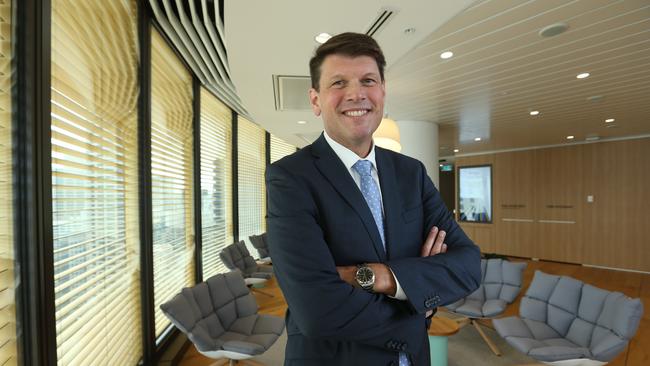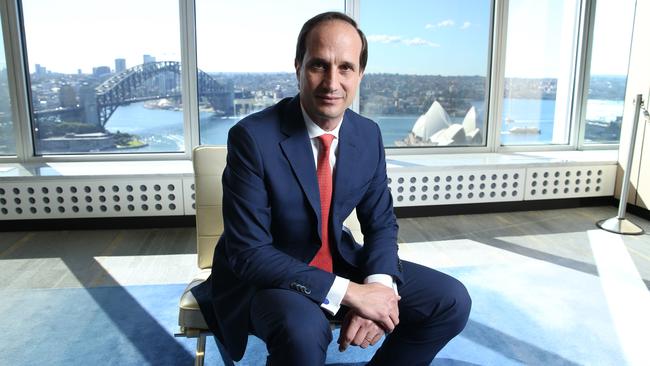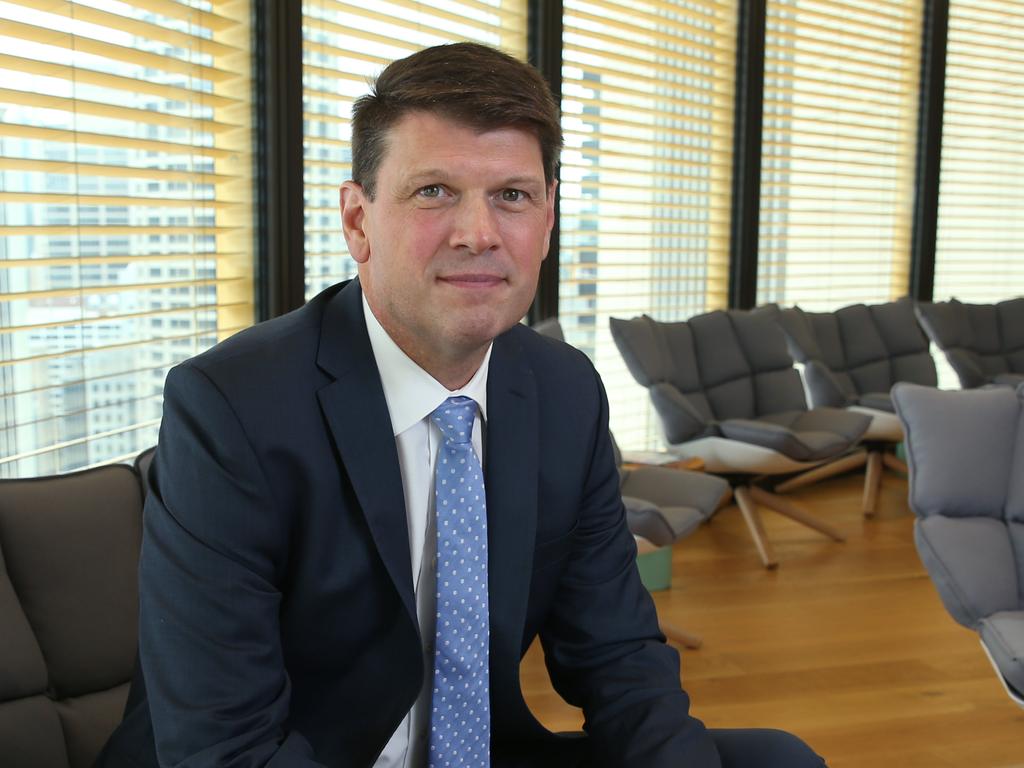
“We are actively assessing our business model and capital structure to maximise shareholder value and support our evolving strategy as the shaping forces of customer needs, community expectations and technology continue to accelerate,” he confided on Thursday.
As a company, AGL has had more strategies than most of us have had hot breakfasts, but one option is to spin off its generation assets into a separate company, leaving its powerful retail arm with 4.2 million customers nationwide.
Redman talked up next month’s briefing as he outlined a reported loss of $2.3bn on a 14 per cent fall in sales to $5.4bn.
The loss came after the already disclosed $2.7bn writedown, of which $1.9bn was from dud contracts on the company’s past efforts in wind generation.
The need for a company split was flagged in this column last week based on historical work from industry analyst David Leitch.
The contracts were written by AGL last decade in its windpower development, where it agreed to long-term contracts at what are now inflated prices.
The problem for the industry is that the spot price for black coal-generated electricity is $35 a megawatt hour, which is below the cost of production.
While AGL has other avenues to profit, the present spot price is clearly unsustainable.
Compounding the issue for Redman is a lack of certainty in government policy with his home base in NSW front-running the feds on the issue, pushing for more renewable power.
Rooftop solar power is now of a scale to supply 9 per cent of all electricity deals. Throw in wind power and that percentage climbs to 23 per cent.
After its flutter on wind in 2006, AGL went full tilt back into coal-powered power stations, which are now facing even bigger remediation costs as outlined in the writedowns.
Just how radical Redman is prepared to be remains to be seen because he played his cards close to his chest at the analyst briefing.
He also faces an end of March deadline from federal Energy Minister Angus Taylor to build more gas-fired power in NSW to support the renewables growth.
Solar power works when the sun is shining.
Redman is a former corporate strategist for the company so is well versed in the options and it just depends on how radical he chooses to be. The ultimate goal is to boost shareholder value.
AMP comes clean
AMP has finally come clean on what many already knew, being that mooted suitor Ares Management from day one last October was only interested in AMP Capital.
The company’s stock price slumped 10.7 per cent to a four-month low of $1.37 in part because not even the partial deal could be announced.
Given Ares in Australia is run by former Credit Suisse boss John Knox and AMP itself is closely aligned to Credit Suisse, this raised eyebrows, but time will tell whether that deal can be concluded in coming days.

Based on the price AMP paid to buy out UTB’s 15 per cent stake, the full division would be worth something north of $3.1bn, which compares with the AMP market value of $5.3bn. This would leave Francesco De Ferrari with the resurrection of the wealth management division — not exactly a walk in the park given it is still suffering capital outflows in the wake of its long-running downturn.
The $8.3bn outflows last year included $800m in early releases due to COVID and another $1.8bn in corporate mandates, but wealth management is driven by inflows not outflows.
Since 2018 the company has lost advisers in part of its own choosing and now has 1575, down from 2567 in 2018.
The bright spot is the bank, which posted earnings of $119m and is in good shape.
De Ferrari has consultants Symmetra engaged to help him on a cultural overhaul and trying to be a more inclusive company, listening better to a range of inputs.
He also wants the government to ease the rules around digital advice so more people can get financial help at lower costs.
The company’s North platform continues to do well, but De Ferrari has a long road ahead and needs to avoid past own goals.
A hasty sale of the AMP Capital division would help clear air.
Penn’s challenge
In the five years from 2016 to 2020m, Telstra’s earnings before interest, tax, depreciation and amortisation fell from $10.5bn to $8.9bn and this year it will be about $6.6bn, which underlines the challenge ahead for Andy Penn.
Six years into the top job, he describes this year as the turning point as he sets himself the aspirational goal of producing earnings of $8bn in the 2023 financial year.
The market gave him the benefit of doubt, but the size of the challenge is enormous.
After continued earnings declines, Penn is talking up his chances of growing earnings by $1bn or more and his success in doing that will set his eventual tombstone in the company hall of fame.
At year’s end he will outline the new strategy to replace T22, which has resulted in a refocus and a mass simplification of the customer offering, among other benefits.
This was to offset the peak years of NBN customer migration but from now on NBN will be paying Telstra $1bn a year in rent, which is more of a windfall than a headwind.
Penn is a master of adding new bells and whistles, like the decision to bring all Telstra retail outlets in house, which on paper is a good move.
But it didn’t do much for the Vita Group stock price given it manages 90 or so stores and its stock fell 27.6 per cent to 81c.
Trouble for Penn is there are kids in the sandpit like NBN boss Stephen Rue and he wants to grow earnings from $4.5bn to $6.2bn, which can only happen if consumers pay more or Telstra, Optus and TPG earn less.
It will be a combination of the two, which means Penn will have to take out more costs, having already cut worker numbers significantly.
The Telstra board has dipped into free cashflow to help pay for the promised 16c in dividends this year, which will please shareholders but adds more pressure to Penn and his team.
This year he will sell some or all of his mobile towers, which will earn about $230m and fetch around the $5bn mark.
The valuation will increase if Telstra allows the purchaser to place other carriers’ equipment on the towers, something the company has traditionally refused.
There are other hidden jewels, such as the Telstra venture assets which is the company’s in-house venture capital unit, and Telstra health increased revenues by 17 per cent to about $150m.
But it’s the mobile franchise that produces half its profits and offers the best hope to actually increase earnings, which is what Penn is promising.






AGL boss Brett Redman has flagged a potentially major shake-up of the company in the face of falling wholesale electricity prices that raise doubts about its sustainability.